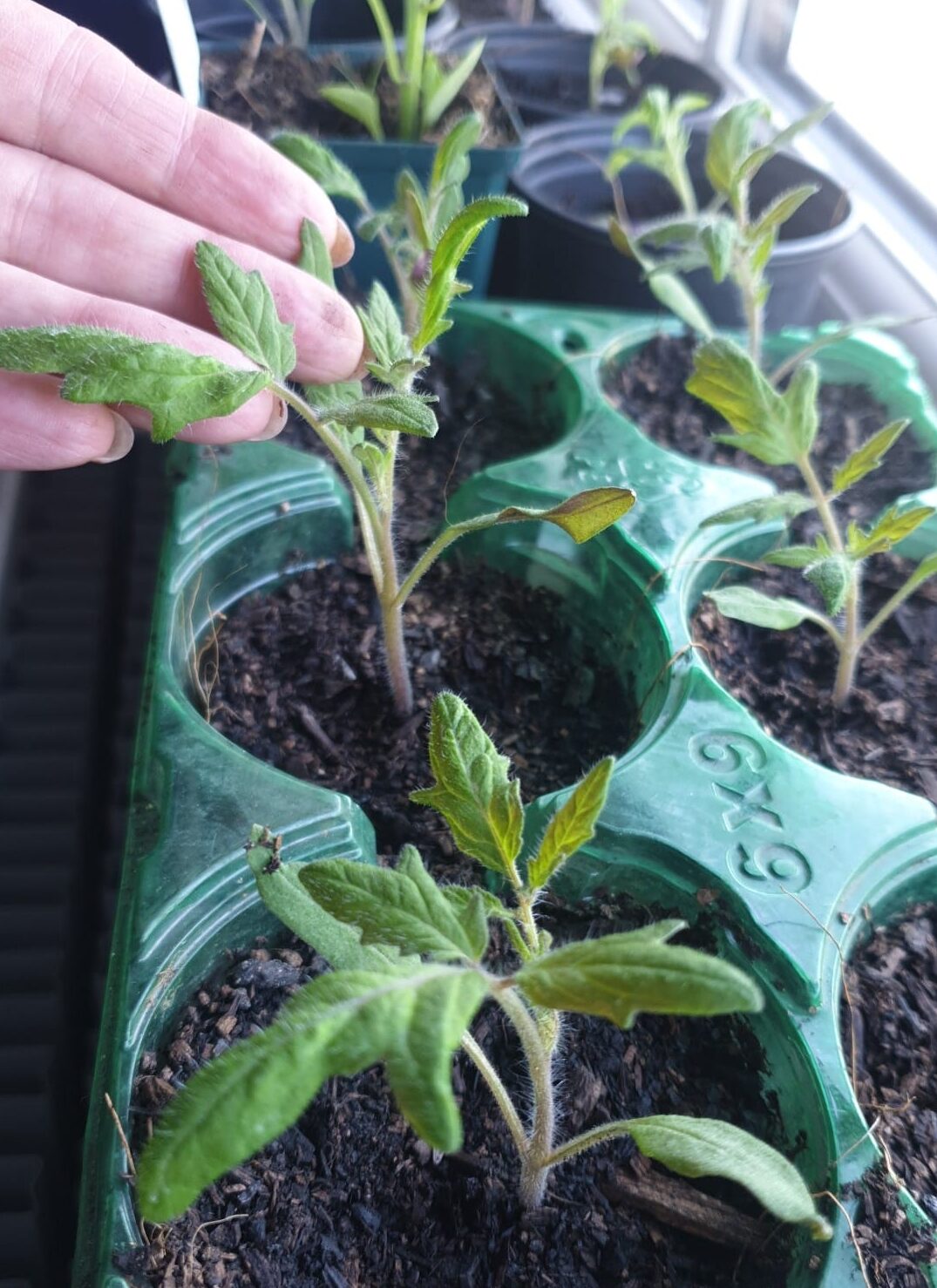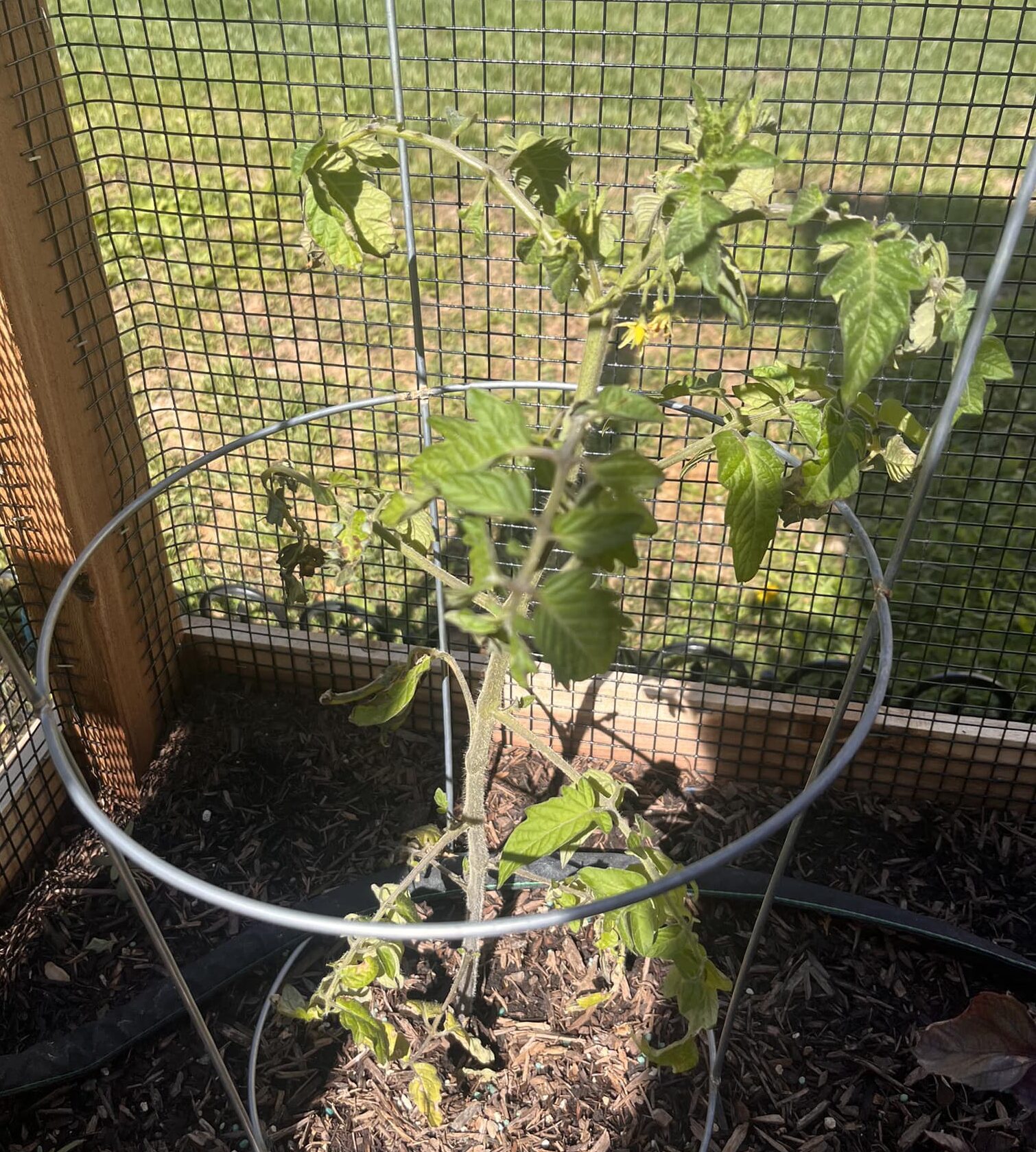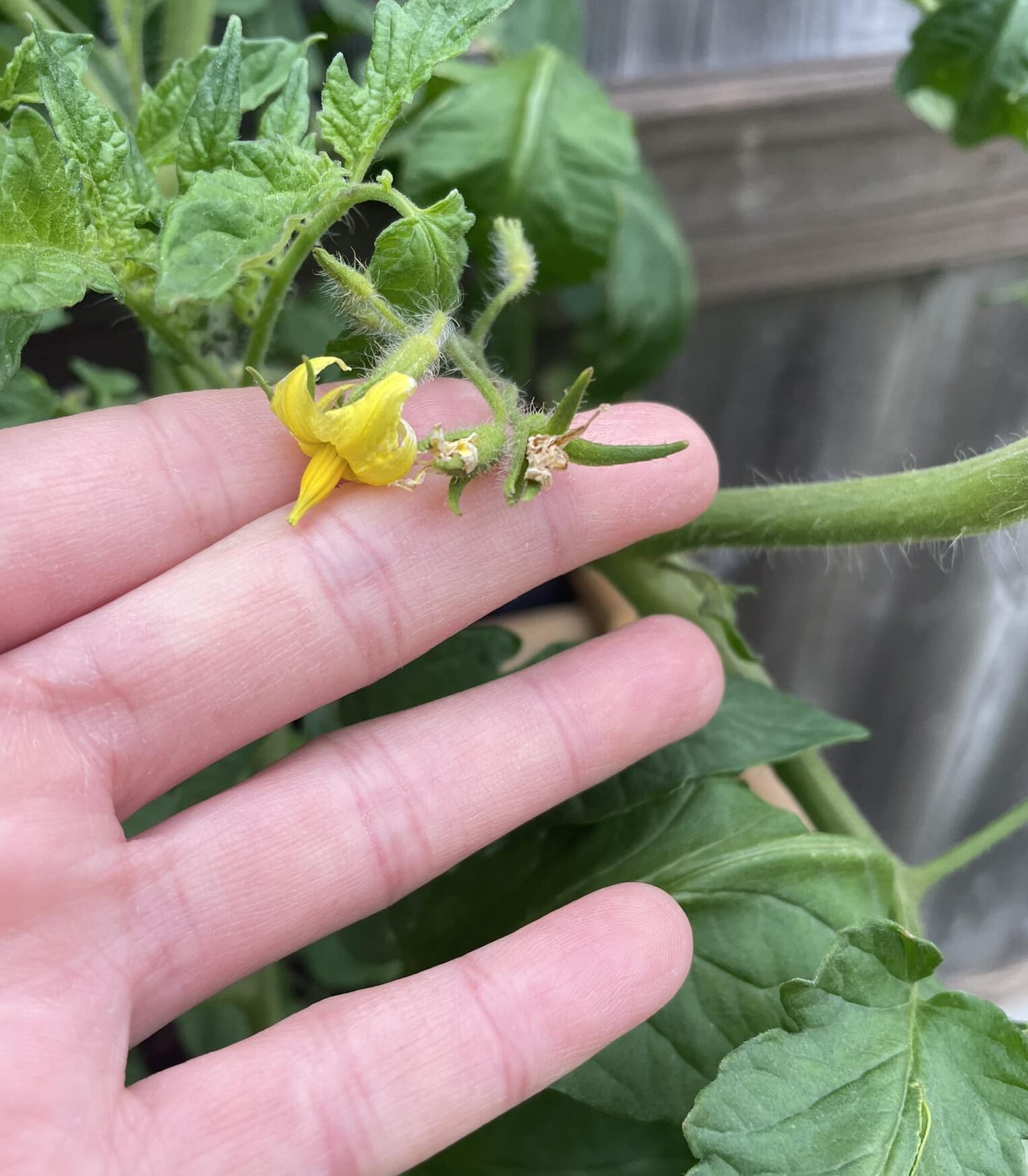Amateur gardeners often rebuff crucial signs of healthy tomato plants during growth or harvest.
This may lead to overripe fruits, needless competition, distorted or diseased leaves, and flowers with less yield!
Let us review the signs to inspect whether your tomato plants are on the right track to giving you delicious fruits!
Table of Contents Show
Growing Tomatoes for Beginners
Tomatoes hail from the plant family Solanaceae, alongside Potatoes, Chillies, and Eggplants, and are, in fact, a berry fruit.
However, with many cultivars available and used in almost every cuisine, tomatoes are the most popular vegetable in the world.

Tomatoes are also great for companion planting as they easily grow to fit with plants of the same or other families.
Many tomato varieties produce vibrant fruits, including red or purple varieties, and all grow with the same cultural care.
Also, you can start tomato seeds from mid-March to early April indoors and transplant the seedlings during June or July when the ground begins to warm.
But despite all the care, tomatoes must get some extra boost of upkeeping to withstand the harsh outdoor conditions.
Hence, you must follow a thorough list of care checks to ensure healthy tomato plants!
1. Proper Spacing Between Tomato Plants
Developing tomato seedlings are competitive for water, nutrients, and sunlight. So they need a spacious growing area.
To ensure healthy plants, you must space tomatoes by garden and type.
How far apart to plant tomatoes by plant type?
- Determinate Tomato Varieties: 12-24 inches apart
- Indeterminate Tomato Varieties: Above 18 inches
How far apart to plant tomatoes by garden type?
- In Containers: 12-24 inches wide and deep planters
- In Ground: 18-24 inches apart in rows, with each row at least 36 inches apart from another
- In Raised Beds: 12-24 inches apart

Moreover, proper spacing between your tomatoes offers the following benefits for the plants.
- Less competition between the developing seedlings
- Less congestion and more airflow between the plants
- Adequate sunlight and fewer incidences of outbreaks (pests and diseases)
2. Plump & Smooth Tomatoes
Shiny and smooth tomato fruits mean that your tomato plants are thriving and fruiting healthily.
Why do my tomatoes have cracks in them?
- Cracks or splits may result from unwanted visitors like pests, birds, and bites by herbivore pests like deer.
- Additionally, an extreme watering conditions, such as heavy rainfall followed by dehydration, can cause cracks.
- Also, a rapid change in soil moisture causes the fruits to expand quicker than their skin can grow, leading to nicks.
- Sometimes hot and humid weather cause radial or vertical splits and concentric cracks in a circular pattern.
To keep tomato fruits healthy and crack-free, you must manage watering and humidity demands for the plant.
3. No Sunscald Tomatoes
Sunscald occurs due to the harsh sun rays creating blisters and burns on the fruit.
This leads to yellow patches, which ultimately turn white.
Tomato Sunsclad Treatment
Use the following tips to prevent sunscald in tomatoes.
- Avoid pruning the leaves frequently. It removes the shade protection from the plant.
- Cover the exposed fruits with a shade cloth to protect them from scorching sunlight.
- Prevent defoliation and leaf drops that result from leaf diseases.
4. Absence of Brown Leaves
It’s alarming to see tomato leaves with brown spots. If you don’t have them, then it is just great.
Additionally, the brown spots occur due to early blight, a fungal disease, and affect the older leaves first.
It usually happens during warm, rainy, and wet climates, and the pathogens will stay in the soil, attacking the new plant in the same spot again.
The fruits also get affected by leathery and black spots, causing them to fall off the plant.
5. No Deformity in Tomato Shape
Catfacing is a malformation giving tomato fruits a similar shape to a cat’s face.
Moreover, catfacing in tomato fruits occurs toward the blossom ends, where the flowering stalk joins the fruit.
Reasons for catfacing tomatoes
Some common reasons for catfacing in tomatoes are as follows.
- Chemical injuries from herbicides, pesticides, or fungicides
- Prolonged drought above 85°F and cold temperatures below 50°F
- Excessive pruning or nitrogen levels in the soil
6. Plenty of Sizeable Tomatoes
If you have few flowers on your tomato plant, then the fruits will also tend to grow less in number.
However, if your tomatoes are big and many, you are on the right track to nurturing the tomato plants.
To bear fruits, tomato plants must beget enough blooms.
But sometimes, tomato plants look healthy and full of leaves but no flowers.
This results in smaller or no fruits at all, possibly for the following reasons.
- Lack of pollinators in the garden due to unusual weather conditions, leading to defective pollination.
- Close spacing between the tomato seedlings leads to congestion, affecting their growth speed and flower production.
- Sometimes lavish nitrogen-rich feed application promotes lush leaves but no flowers or fruits.
7. No Rolling Leaves
If the leaves in tomato plants are straight, the plant exhibits good productivity.
However, rolled-up or twisted leaves halt their production and photosynthetic activity.
What causes tomato leaves to roll?
The following are some reasons for tomato leaves to roll or deform.
- Rolling leaves usually occur in mature tomato plants, called tomato leaf curl disease caused by Gemini Virus. The leaves curl or twist from outside towards the inner center.
- Too much or too little watering and pruning are common causes of leaf rolls.
- Another possibility for bending leaves is due to heat or cold stress.

8. No Blossom End Rot
Glossy tomato fruits are the signs of a healthy and productive harvest.

Additionally, blossom end rot occurs by various irregularities in soil, and external issues, which are as follows.
- If your tomato plants grow in soil lacking calcium, the bottom end of the fruits start turning black and rot.
- Lack of watering consistency and dehydration also causes this rot which may lead the fruits to turn mushy and black at the base.
9. No Wilting Leaves
It’s great if your tomato plants do not have droopy or wilting leaves.
These pathogens turn the leaves yellow, droopy, and brown. Later, leaves start falling off the plant.
Other possible culprits include dehydration, tomato wilt virus, walnut toxicity, and pests like stalk borers.
10. Are There White Powder on Tomato Leaves?
It’s not a good mark if you see white chalky molds in your tomato leaves.
Later, the leaves can curl and develop pale yellow spots, ultimately turning brown (necrosis), making them fall off.
The disease can also affect the shoots and fruits of the tomato plant, ultimately killing it.

11. Are Tomatoes Hollow Inside?
Puffiness is another issue that might bring a concern with unhealthy tomatoes.
What causes puffiness inside the tomatoes?
Lack of soil nutrients, fertilizers, or adequate pollination is one of the reasons behind the issue.
However, a few tomato varieties are sometimes bred to produce hollow or empty cavities like bell peppers.
These tomatoes are ‘stuffer’ varieties with natural puffiness in them.
12. Healthy & Strong Flowers
Cheerful blooms indicate a good yield on tomato plants, as the number of blooms determines the number of fruits.
Tomato flowers dying before opening or blooms falling off tomato plants causes the fruit yield to decrease and cease the productivity of tomato plants.

Why are the blooms falling off my tomato plants?
Some common reasons for tomato bloom drops are as follows.
- Extremely less or more amount of nitrogen
- Lack of pollination or pollinators to do the job
- Dehydration (especially during heat spells)
- Pest attacks and disease outbreaks
- Too hot or too cold temperature stress
How to Keep Tomato Plants Healthy?
Tomato plants produce superior growth rates and bloom and fruit yields if the plant stays fit.
You must pick a constant care routine to maintain tomatoes in good shape.
- To avoid diseases and pests, use resistant tomato varieties like Big Beef, Big Boy, Early Girl, and Celebrity.
- Employ crop rotation to protect the plants from pests and avoid disease incidence.
- Use copper-rich fungicides periodically to keep a healthy tomato plant harvest.
- Increase watering incidence during heat spells and protect the plant from cold using frost blankets in winter.
- Fertilize the plant every 4-6 weeks in spring and summer with nitrogen-based feed during the growth span only.
- Resort using bloom boosters right before flowering stretch to encourage buds, flowers, and fruits later in the seasons.

- Mulch the tomato plants to keep the soil from splashing in the leaves during irrigation.
- Harvest the unripe fruits if they show cracks to ripen them off the plants to deter casual outbreaks.
- Include plants such as green basils and marigold varieties as tomato companions to encourage pollinators and as a barrier against pests and diseases.
- Use foliar sprays or soil additives of Epsom salts to encourage higher and more vigorous fruit yields.
From Editorial Team
Conclusion!
Tomatoes do not tolerate cold and rarely fruit or bloom during winter. So, bring your tomatoes in to keep them warm.
So, if you have any tomato plants growing outdoors, collect their dried seeds and pack them to sow in spring or summer.
